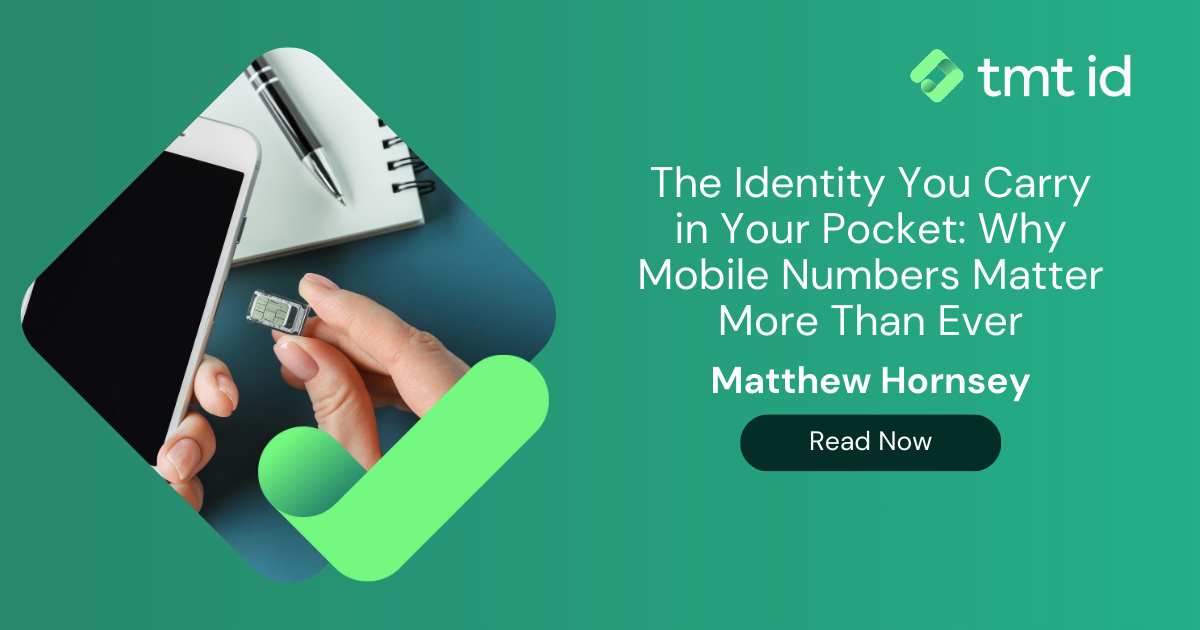
What is a mobile phone number? This may initially seem a silly question, but the answer may be more complex than you first think.
We all know what one looks like. In the UK, where I’m based, it’s an 11-digit number starting with 07. In the US, it also begins with a zero followed by ten further digits, the first three of which are an area code, whereas the UK version has no indication of geography. And these small format variations continue across the globe.
But there’s more to a phone number than just the digits. A lot more.
Today, your mobile number — or cellphone number, as it’s called in the US — is a crucial part of your digital identity. Probably the single most important part.
When you enter a digital space, others often see you primarily through those digits and their associations. Yes, facial recognition is becoming common — your iPhone or Android likely knows what you look like. But that doesn’t apply across the online landscape.
In digital spaces, your mobile number is more reflective of who you are than your face, more, even, than your name in many cases. We call it the “digital world” because it’s built on digits. Not faces. Not flesh. Just numbers.
So, what do online services actually “see” in your number to help assess your credibility or trustworthiness?
It all begins the moment that number is created — when that specific sequence of digits is assembled for the first time. It’s issued to a mobile network operator and assigned to a SIM card.
Once assigned, whether through a Pay As You Go SIM or a new contract, it becomes a key part of a user’s digital persona.
Then, as that person begins to use their mobile online — adding it to signup forms, making transactions, data associations start to build. These moments create a footprint, a timeline of digital events: onboarding, payments, logins. Over time, these interactions build a rich behavioural history linked to that number.

This journey continues until something changes. The person may switch numbers, leaving the old one to be reassigned. It might go dormant. Or — worst case — it could be compromised by scammers and used for fraud, triggering security red flags.
Each of these paths adds to the history of that number — a timeline of digital trust or risk. And that’s what organisations look at to assess whether they’re dealing with the real you… Or someone pretending to be you.
At TMT ID, we specialise in analysing this ‘number history’ so our customers can make informed decisions.
Is the number trustworthy? Is it safe? Is there a risk?
We’re not in the business of snooping — we’re here to simplify digital experiences. When you onboard with a business, we want them to know instantly that you’re real. When you’re transferring money, we want to make sure it’s you doing it, not someone hijacking your digital identity.
And if your number has been compromised, we want to raise that red flag before anything is taken from your account, not after.
That’s what we do.
We protect digital identities while keeping the user experience seamless. We want people to be able to make secure purchases without delays or friction.
We don’t care what you’re buying. We just care that it’s safe for you to buy it.
Last updated on April 17, 2025



Verify offers a vast range of data intelligence around a customer’s mobile number. It helps you confirm a customer’s identity to assess the authenticity of a mobile number and identify any suspicious activity
Learn more about VerifyWe provide the most comprehensive device, network and mobile numbering data available
Contact us > Chat to an expert >